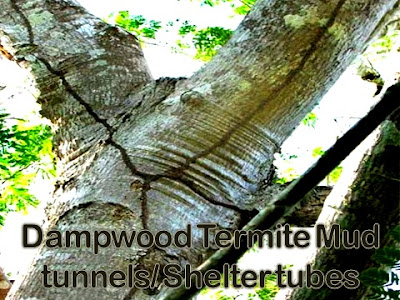URBAN PEST MANAGEMENT PROGRAM
DESIGNED FOR CERTIFIED PESTICIDE APPLICATORS
A CERTIFICATION PROGRAM FOR PESTICIDE APPLICATORS [CPA]
TRAINING PROGRAM
This CERTIFICATION PROGRAM FOR URBAN PESTICIDE APPLICATORS [CPA] TRAINING PROGRAM is a TWENTY-FOUR [24] HOUR BASIC URBAN PEST MANAGEMENT COURSE.
An actual Field Training Program for 3-5 days which is required either as SERVICE TECHNICIANS [ST] or as SERVICE SUPERVISORS [SS] and as SALES PERSONS/ PEST CONTROL CONSULTANTS [PCC] upon completion of the program at no extra cost. Make the necessary arrangements with us for this purpose.
The course is in accordance to the Department Health Circular 155 S-1975 as strengthened by Presidential Proclamation Nos. 990 [circulated in the Department of Health and all its bureaus, service and project offices, hospitals and all concerned through Department of Health Circular No. 251-A S-2001] which is further strengthened and expanded by Presidential Proclamation 2063 and affirmed by the Supreme Court Ruling & Resolutions, and per the Implementing Rules & Regulations of the National Committee on Urban Pest Control on Urban Pest Control In The Philippines. This is likewise in line with the Republic Act 7459 [Inventors & Inventor Incentives Act], Republic Act 9003 [New Solid Waste Management], Administrative Order No. 227 on giving preferences in the procurement of materials and supplies, produced, made and manufactured in the Philippines issued by the Office of the President on May 27, 2008, and the occupational health and safety requirements of the Bureau of Working Conditions [BWC] of the Department of Labor & Employment [DOLE]. NCUPC shall function as the SHE [Safety, Health & Environment] coordinator of all NCUPC-licensed CPAs and/ or PCOs.
Prospective trainees shall pay the cost of the training [P 3,000.00/ participant to be paid on or before the deadline] and licenses that they need.
At the end of the 3-day training program, each participant shall be assessed/ evaluated. Pesticide Applicator Certification will only be released after satisfactorily passing the required examinations or their alternatives.
FUPCAP Form is available at the website: www.ncupc.org Download the form you need through our website or pick it up at the NCUPC Office and fill it out completely and attach 2 pcs. 1x1 colored ID pictures and your signature in white paper. For reservations, submit the filled out form personally or mail it at our e-mail address: ncupc_manila@yahoo.com not later than December 1, 2017 only. Walk-in participant is strictly not allowed.
A prospective trainee is expected to come on time wearing semi-formal attires. Slippers are not allowed. This program is semi-paperless and therefore most of the training modules/ materials are only available on CD.
Venue: National Committee on Urban Pest Control [NCUPC] Conference Room, 2461 Arellano Avenue, Malate, Manila.
Date: December 13-15, 2017 [Wednesday through Friday]
Training Time:
Training Starts: 8:00 - 12:00 A.M.; 1:00 – 5:00 P.M.
Coffee Break: 10:00 – 10:15 A.M.; 3:00 – 3:15 P.M.
Lunch Break: 12:00 – 1:00
Training Ends: 5:00 P.M.
CPA TRAINING COURSE OUTLINE
A. Course Introduction
B. Common Pests In Urban Areas/ Environment: Their Characteristics, Behaviors, & Biology
B.1. Termites & Other Wood Damaging Organisms [WDOs]
B.2. Rodents [Urban Rats & Mice]
B.3. Mosquitoes, Cockroaches, Houseflies & Other Urban Pests
C. Product Knowledge/ Estimation Skills/ Urban Pest Control/ Integrated Pest Management [IPM] Program Strategies
C.1. Non-Structural Pest Management Program:
C.1.a. General Pest Abatement Maintenance Program [GPAMP/ GP]
C.1.b. Rodent Abatement Maintenance Program [RAMP/ RP]
C.1.c. Fogging [FOG]
C.2. Structural Pest Management Program:
C.2.a. Soil Treatment [ST]
C.2.b. Wood Drenching [WD]
C.2.c. Termite Abatement Maintenance Program [TAMP/ TP]
C.2.d. Mound Demolition [MD]
C.2.e. Drilling [DR]
C.2.f. Beetle/ Bukbok Abatement Maintenance Program [BAMP/ BP]
C.3. Environmental Pest Abatement Maintenance Program [EPAMP]
C.4.Fumigation Program
C.5. Others
D. Inspection Techniques
E. SHE [Safety, Health & Environment] Program/ Understanding Pesticide Exposures
F. Chemical Allocation/ Pricing
G. Course Conclusion
H. Examinations [To Be Arranged]

For further inquiries and details of the training, please call the NCUPC Secretariat at Tel. No. 02 484-02-08. Look for Technical Assistant Marlon J. Jolampong.




























